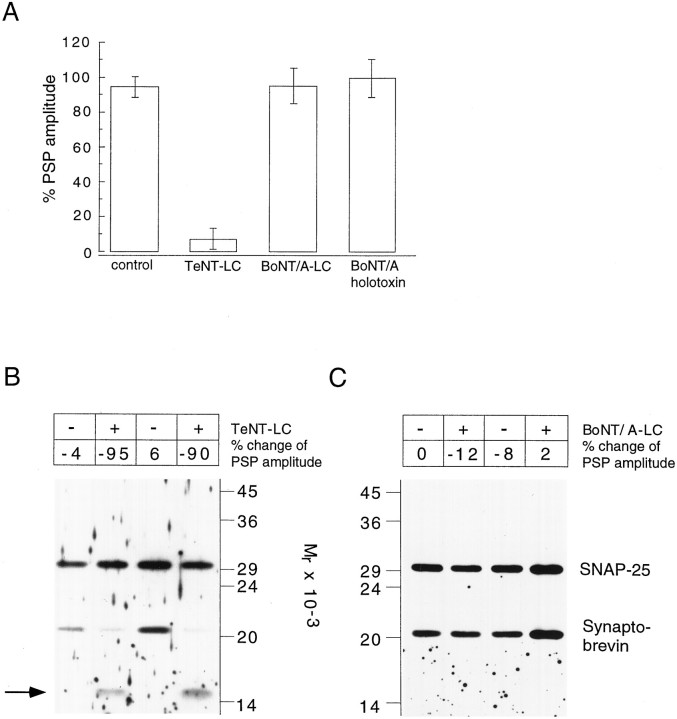Fig. 9.
Inhibition of transmitter release correlates with the proteolytic activity of TeNT and BoNT/A in the presynaptic neuron.A, Effects of injection of control and toxin solution on the mean PSP amplitude (average response of 10 evoked PSP, second recording) normalized to mean PSP amplitude before injection (first recording). Averaged data from saline (control;n = 10), TeNT-LC(n = 8), BoNT/A-LC(n = 6), and DTT-reduced BoNT/A holotoxin (n = 5)-injected cell pairs. Note that injection of saline containing DTT was without effect (n = 3; data not shown). B,C, Related immunoblots of single Retzius→P-cell pairs injected with toxin light chain (+) or control solution (−).Numbers on top of the gel lane indicate the mean percentage change of the PSP amplitude after injection, measured for the individual cell pair. Synaptobrevin largely is degraded in TeNT-LC-injected neurons (B). The synaptobrevin antibody recognizes a C-terminal cleavage product with an apparent molecular mass of 15 kDa (arrow). No reduction of SNAP-25 immunoreactivity was observed in BoNT/A-LC-injected pairs (C). Samples were separated on a 15% SDS-polyacrylamide gel and immunoblotted as described in Figure 3. Blots were stained simultaneously with SNAP-25 andSynaptobrevin antibodies.

